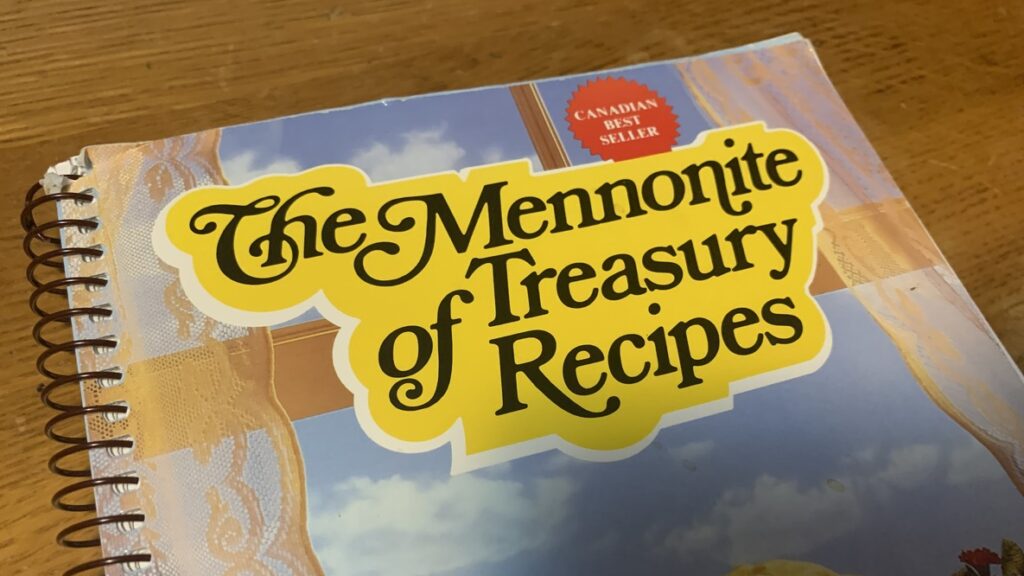We all know the most famous “Russian Mennonite” dishes like vereniki, schmaunt fat, glums koki, kiekle and roll kuchen, but what if we took a little deeper dive into the “Bible of Mennonite cuisine” aka The Mennonite Treasury of Recipes? Confining myself to the “Mennonite Dishes” sections, which, if you’re following along, are on pages 3-25, here are 5 dishes that I have never had in my life. Not even at MJ’s Kafe or the Livery Barn Restaurant at the MHV.
1)Rogenmehl Kuchen (page 10)
This recipe is from Miss K. Dueckman of Steinbach and since it involves honey, sugar and cinnamon, I’m guessing it’s some kind of dessert. Oh, did I mention that it also requires 2 tbsp of ammonia? Of course it does. What Mennonite recipe is complete without ammonia?
2)Kringel (page 12)
The Treasury contains a recipe for Kringel and also “Russian Kringel,” which seems to differ from the non-Russian variety with the inclusion of vanilla and baking powder. Again, I’m guessing this is some sort of dessert. And, of course, that means that it’s entirely possible I’ve had this in a church basement potluck without even knowing it. Kind of like that fateful night in the MB church basement in 1985 when I learned the hard way the difference between tomatoes and red peppers.
3)Zwetschen Knoedel (page 13)
Okay this recipe has me baffled. Among the ingredients are 6-10 medium potatoes … but also 40 fresh plums! Waut de schissjat could this possibly be? Also, I’m guessing this feeds about 100 hungry Penners.
4)Wota Moos (page 19)
I’m not fluent in Low German or its inferior cousin known as High German, but I gather from the name that this is “water soup.” Yeah, well, where I come from we just call that “boiled water.” Upon close inspection, the ingredients are literally just three things: water, bacon, and 1 medium onion. Ummm, I think I’ll pass.
5)Gretti Malck (page 20)
Ummm, here’s another three-ingredient recipe. Buttermilk, sweet milk, and pearl barley. Seems only like a margianal improvement over the wota moos.
So there you have it. I guess you can see why certain dishes have become favourites and others, well, they’ve gone by the wayside. Have any of you tried any of these obscure Menno dishes? Am I missing out?

